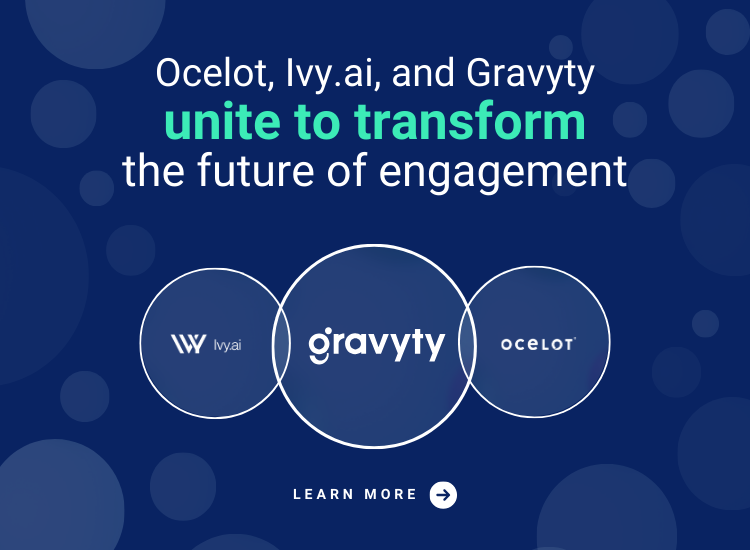The pandemic has accelerated “Digital Transformation” (Dx) at almost every organization across nearly every industry. Within higher education, Dx is going to take time to be fully realized. This is because higher ed relies heavily on legacy systems and processes. But, over time, if Dx is implemented in a way that puts students first, the impact will be felt in profound ways for years to come.
The pandemic exposed how reliant higher education has been on legacy communication channels such as email, as well as other dated platforms and solutions that do not share information with other campus-wide technology and systems. The pandemic created a unique urgency to make investments in the sort of modern communications and virtual engagement tools that have been embraced across other industries (which students are clamoring for) but were slow to be adopted in higher education.
When the pandemic hit, colleges and universities needed ways to provide students 24/7 virtual support along with timely and accurate information. We have observed the most effective virtual technologies in meeting these objectives to be AI-powered chatbots and AI-powered 2-way SMS text messaging. These technologies provide students with quick, short, and consistent communications that keep them engaged, and help them persist through challenges, paperwork completion and pathway selections. The data from the interactions can also be used to improve work-flows and the broader student experience.
Call it the “Amazon effect”. Consumers expect the one-click Amazon shopping experience, recommendations served up based on their individual preferences, and personalized service when they interface with any organization, including their college or university. AI-powered technologies are now bringing these features to higher education, positively impacting the student’s digital journey.
Savvy higher ed leaders understand that Dx can lead their institutions through enrollment challenges and drive efficiency, increased student satisfaction and ultimately, stronger results. They understand, for example, that one-way text communications, while better than email, are missing a tremendous opportunity to maximize engagement with students. AI-powered technologies that enable 2-way conversations are lighting the way for more impactful and informative conversations, which leads to higher levels of engagement and ultimately stronger enrollment numbers and greater student success.
By unifying the twin initiatives of Dx and virtual engagement, institutions can chip away at the blockages holding back their college or university from meeting enrollment and funding targets – and empower students to take greater control of their educational experience.
Here are some of the benefits of combining these two initiatives:
Breaking Down Silos
Data exists in and across a number of legacy systems. Virtual student support technologies, such as AI-powered chatbots, can unify the student experience by accessing and leveraging the data in those systems to facilitate more impactful, personalized interactions. Students do not care that there are multiple systems providing data. They want a “quick first step” to access the information in those systems, to complete paperwork, schedule appointments and move forward with their educational goals. AI-powered chatbots provide institutions with virtual student engagement tools that drive student success without the need to switch systems. This enables institutions to move quickly toward their Dx goals.
Mission Execution
Let’s not lose sight of why educational institutions exist and what needs to be at the forefront of a school’s Dx efforts. The mission is to help students advance in their academic, career and trade paths. By removing barriers to student success, colleges and universities advance their missions. Given all the challenges facing colleges, virtual student engagement tools are a “quick win” that creates the personalized and speedy “Amazon experience” students are looking for, and enables staff to spend additional time on other mission-critical priorities.
Meeting Students Where They Are
It’s important to learn the key lessons from the pandemic. Students – like all of us – want personalized assistance when they encounter a problem. Yet, that type of experience does not always have to be provided by a human being. It may be that staff are the best resource during normal business hours, especially when there is not a peak rush…but during busier time periods, or after hours, students have made it clear that they generally expect support to be readily available. With increasing numbers of students working while attending college, providing flexible communication options helps busy students connect with the college when they do have time to connect. Today’s students broadly prize speed and accuracy over waiting until someone is available to help them. Using virtual student support technologies such as AI-powered chatbots can supplement your greatest asset, your staff. Across Ocelot’s platform, nearly 40% of chatbot conversations take place outside normal business hours. Extend the reach of your staff, guide students to information through proactive AI-powered conversations, and enable students to quickly access the information they need by incorporating AI-powered technology.
Supporting Staff Coming Out of COVID
As noted above, an institution’s staff is perhaps its greatest asset. The pandemic has turned most everyone’s life upside down in one way or another. Whether it’s juggling personal and family needs while working, or adjusting to remote work when it was “in-person” work that first drew you to a job on campus, it’s been a whirlwind of change. As a result, there’s a tremendous amount of turnover happening in higher education. Colleges and universities need to support their staff more than ever. This includes providing mental health support. It can also include investing in virtual engagement technologies such as AI-powered 2-way SMS texting and chatbots that take care of repetitive tasks for staff and enable staff to focus on projects that are of the highest impact and best use of their time. Finally, AI-powered technology (like chatbots) can become the repository for knowledge that historically has been “in the head” of key staff members. By moving to an AI-powered knowledge base repository, the institution reduces the disruptions from staff turnover, allows standardization of information across departments and also reduces burdens on the staff to maintain all the knowledge within their heads.
Moving to a Sustainable Future
The challenges facing higher education are existential in many ways. If enrollment and funding targets are not met, it can create a downward spiral. Fewer programs offered. Fewer faculty to teach. Fewer administrators to support the operations. Fewer advisers to support students. By embracing Dx and virtual student support, institutions can begin the process of getting more efficient – on their terms – rather than doing it reactively. And at the same time, colleges and universities can provide students with the efficient “Amazon experience” they are expecting from institutions they attend.
The Wrap
Digital Transformation is more than a trendy topic. It’s a phenomenon that is afoot across all industries and sectors of the economy, including higher education. The ongoing pandemic has exposed the need for all organizations to have a plan to communicate and engage with their constituents, employees and customers, that does not require face-to-face interaction. At the same time, within higher education, students and staff expect that their school will embrace modern technologies to provide virtual support and engagement 24/7. There are a number of benefits from doing so. Perhaps, the greatest of all, is that the college or university can put itself on a path that is more sustainable and more conducive to student success and staff satisfaction if it puts students first in its Dx strategy. Virtual engagement puts students first. It is a critical element in a virtuous circle that advances digital transformation in a speedy and affordable way for all institutions that seek it.








